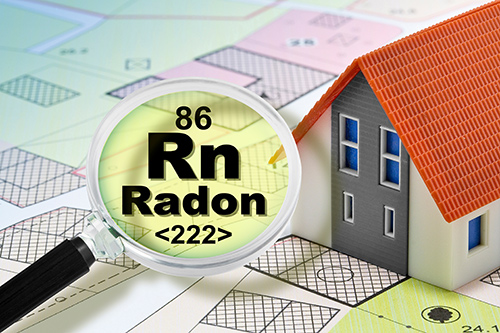High Radon Found at Home Inspection? Here’s How to Handle It

If you're in the process of selling your home, you're likely focused on making it as appealing as possible to potential buyers. But what happens if you discover your home has high radon levels? Should you be worried about how this will affect the sale?
At Radon Systems LLC, we specialize in radon mitigation and helping homeowners navigate the complexities of selling homes with elevated radon levels. Here’s how to handle the situation and ensure a smooth selling process.
1. Understand the Risks of Radon Exposure
First, it’s important to know that radon is a naturally occurring gas that can seep into homes through the foundation. While radon exposure is a significant health risk (it is the second leading cause of lung cancer in the U.S.), the good news is that radon levels can be reduced with proper mitigation.
A high radon reading in your home doesn’t necessarily mean the sale is doomed. In fact, addressing the issue head-on can show buyers that you are committed to maintaining a safe and healthy home.
2. Test for Radon Before Listing Your Home
The best time to test for radon is before you list your property. This allows you to address any issues before buyers bring up concerns during negotiations. If you already have radon test results showing high levels, it’s better to be proactive and work toward a solution.
Testing is simple and can be done using a professional radon testing service. A certified radon specialist will provide an accurate reading, so you can determine whether your radon levels exceed the EPA action level of 4.0 pCi/L (picocuries per liter). If levels are high, the next step is mitigation.
3. Consider Radon Mitigation Before Selling
If your home’s radon levels are higher than the EPA recommendation, it’s highly advisable to install a radon mitigation system before listing the home for sale. Not only will this help protect future residents, but it will also make the home more attractive to potential buyers.
A radon mitigation system typically includes a vent pipe and a fan that removes radon from under the house and vents it safely outside. These systems are relatively affordable and can often be installed in a matter of days.
Having a radon mitigation system in place can provide buyers with peace of mind and help avoid delays or renegotiations during the sale process.
4. Be Transparent with Potential Buyers
Honesty is key when selling a home with high radon levels. If you've already tested and discovered high radon levels, be upfront with potential buyers. Provide them with the results and let them know that you are either in the process of installing a mitigation system or are offering to reduce the sale price to allow for the mitigation.
Being transparent will help build trust and can prevent misunderstandings down the line. Many buyers will appreciate that you’ve addressed the issue before they even stepped foot in the house.
5. Mitigate and Provide Documentation
If you decide to mitigate the radon issue, keep detailed records of the process. Document the installation of the mitigation system, any permits, and the post-mitigation test results that confirm the radon levels are now below 4.0 pCi/L. This documentation will provide buyers with reassurance that the issue has been resolved properly and legally.
Having this documentation readily available can make the selling process go more smoothly, as buyers will feel more confident in the home's safety and value.
6. Offer a Radon Disclosure
In some states, you may be legally required to provide a radon disclosure during the selling process. This document informs the buyer of any known radon levels in the home. Be sure to check your local regulations and fulfill any disclosure requirements.
If radon mitigation has already been completed, include the details of the system installed and any testing results in your disclosure. This transparency ensures that both parties are fully informed.
7. Consider the Potential for Negotiation
In some cases, buyers may ask for a price reduction to cover the cost of radon mitigation if it hasn’t already been done. Be prepared for this possibility and factor in the cost of installing a radon mitigation system when setting your asking price.
On the other hand, installing the system yourself before listing the home could increase the property's marketability and ultimately save time during negotiations. Many buyers may view the investment as a valuable upgrade to the home.
8. Work with a Professional Radon Mitigation Company
At Radon Systems LLC, we specialize in helping homeowners with all aspects of radon mitigation. Our team can provide professional installation services, ensuring that your home is safe and compliant with local regulations.
If you’re selling a home with high radon levels, let us help you navigate the process and protect your home’s value.
Take Action Early
Selling a home with high radon levels doesn’t have to be a deal-breaker. By testing early, addressing radon concerns with mitigation, and being transparent with buyers, you can ensure that the sale process moves forward smoothly.
Contact Radon Systems LLC today for radon mitigation solutions, and expert advice on selling a radon-free home.






